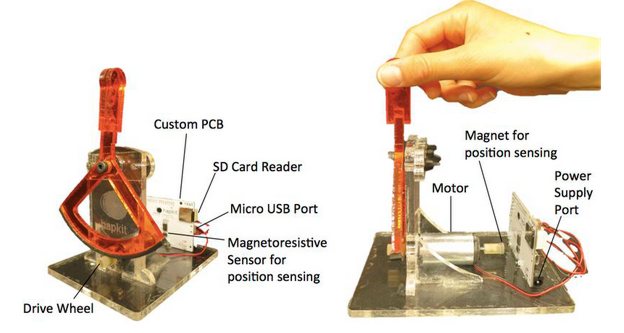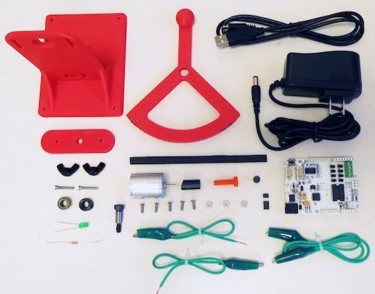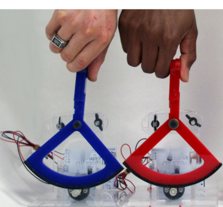| Self Paced Haptics MOOC |
| Written by Sue Gee |
| Wednesday, 29 October 2014 |
|
Introduction to Haptics is an online self-paced course that introduces a topic increasingly important in robotics and engineering. To get the most out of it you need to build your own Hapkit, an interesting project in its own right. The course is now available on the Stanford OprenEdX platform and is taught by Allison Okamura, an associate professor in the Stanford University mechanical engineering department. It consists of five modules, each of which should take around 10 hours. It is self-paced so you can participate at any time. If you've not come across this field before and are wondering what the course is about, in the introductory video Allison Okamura explains: "the word haptics means having to do with the sense of touch. Like the word "optic" has to do with vision, haptics has to do with touch."
Teaching assistant Melisa Orta, a graduate student in Alison's research lab expands on the definition: "I love haptic technology because it can be used to create touch sensations in a wide variety of important applications. On one end of the spectrum is simple vibration feedback, like when your smartphone shakes to let you know that you have an incoming phone without disturbing other people. On the other is 3-dimensional force feedback that lets a surgeon practice doing minimally invasive surgery in a virtual environment before operating on a patient." You don't need to know anything about haptics to embark on the course but you do need some programming experience plus high-school physics and pre-calculus, in particular trigonometry. To fully participate you'll need to build your own "Hapkit" in order to engage in lab assignments intended to give users hands-on experience in assembling mechanical systems, making circuits, programming Arduino-based micro-controllers, and testing their haptic creations.
There are now two versions of the open source Hapkit. The laser-cut original, produced for the 2013 pilot of this course, and the 2014 3D printed version which is the one recommended for this class.
Files for the 3D-printable parts can be downloaded from the Hapkit site and a parts list provides online stockists for other components although it should be possible to source many of them locally.
More InformationRelated ArticlesA sticky touch screen improves interaction Learn Electronics with Arduino (book review)
To be informed about new articles on I Programmer, install the I Programmer Toolbar, subscribe to the RSS feed, follow us on, Twitter, Facebook, Google+ or Linkedin, or sign up for our weekly newsletter.
Comments
or email your comment to: comments@i-programmer.info
|
| Last Updated ( Wednesday, 29 October 2014 ) |




